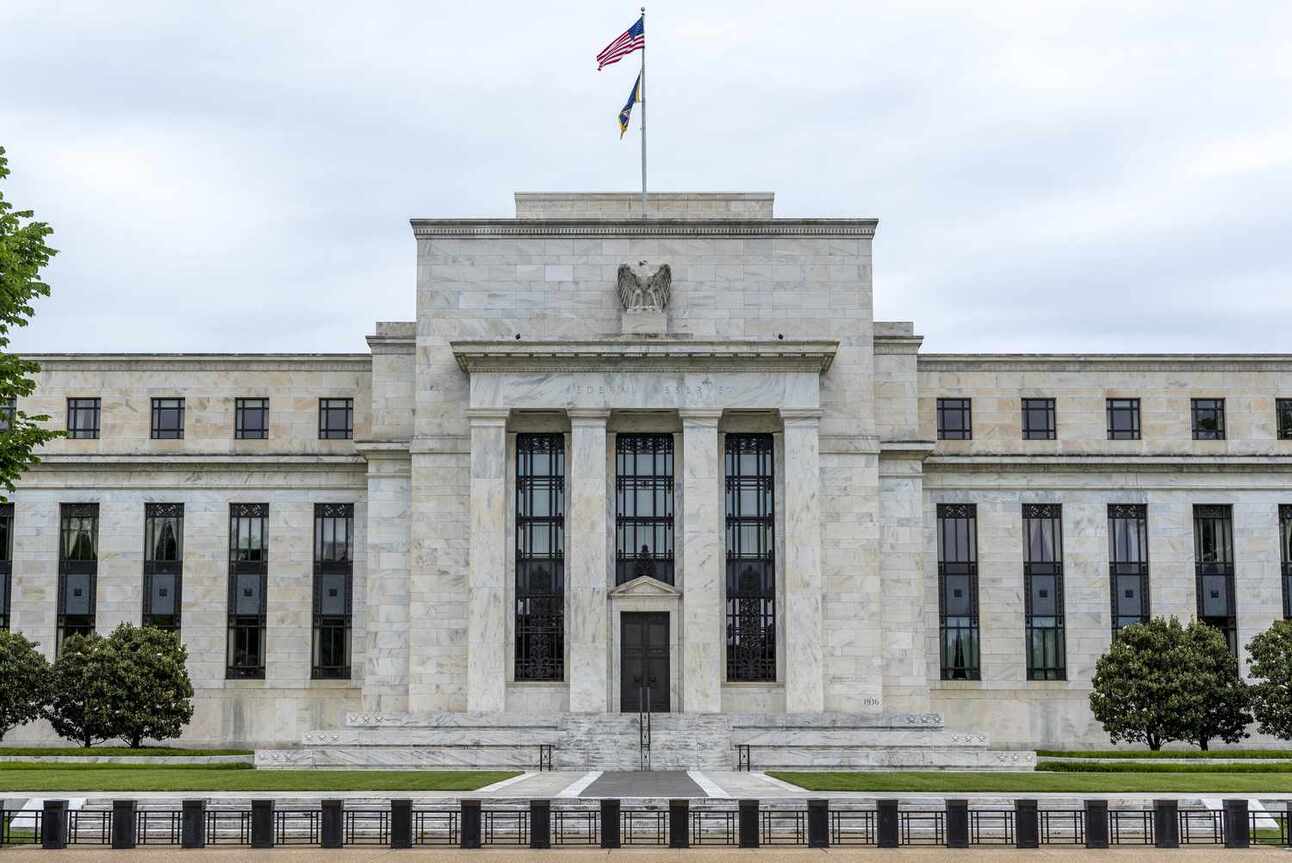- Kalypsus Research
- Posts
- No Good Options: Powell’s Interest Rate Crisis
No Good Options: Powell’s Interest Rate Crisis
Inflation is sticky. Growth is slowing. A recession could be on the horizon.

Jerome Powell is walking a tightrope, overlooking sticky inflation and tariffs on one side, and slowing employment and a potential recession on the other.
Should the Fed Cut Rates?
This question is dividing America, from the President and other politicians, to investors, to everyday citizens.
The Federal Reserve (the “Fed”) was created by Congress in 1913 and tasked with the dual mandate of pursuing i) maximum employment and ii) stable prices.

The Federal Reserve headquarters in Washington D.C.
The Fed navigates its mandate by managing monetary policy, or policies to influence the money supply and credit in the economy:
During a recession, the Fed lowers interest rates to incentivize borrowing. This should increase economic activity and support employment
If growth is strong, the Fed will increase rates to slow borrowing. This should reduce economic activity and slow inflation
To influence rates, the Fed sets the federal funds rate, which is the interest rate banks charge each other for overnight deposits.
The federal funds rate flows through the economy by influencing other short-term rates like credit cards, car loans and savings accounts. The federal funds rate also indirectly influences longer term rates like the 10-Year Treasury and mortgage rates.
Measuring the Economy
In theory, the Fed’s job is easy. It needs to cut interest rates during recessions and raise them as the economy grows.
But managing the economy is much harder in practice.
The Federal Reserve follows a myriad of economic data to assess the economy and calibrate interest rates.
To track employment, the Fed looks at measures like the change in nonfarm payrolls and unemployment rate. To assess inflation, it follows changes in the Consumer Price Index (“CPI”) and Personal Consumption Expenditures (“PCE”). But today, the economy is giving increasingly mixed signals.
The U.S. employment picture is murky. Despite expectations of a recession,
change in nonfarm payrolls (a measure of employment growth) has been resilient.
Payrolls have trended down in recent years, but are still near the 200K baseline of maintaining growth. Unemployment remains low at 4.1%.

Payroll growth is slowing, but recent data came in stronger than expected.
On the inflation side, the Fed has a target of 2.0%. Following a post-covid spike, inflation fell as the Fed increased interest rates, but remains above the Fed’s target.
Trump’s new wave of tariffs adds further inflation risk. Many expect the costs of widespread tariffs to land on U.S. consumers.

Inflation has cooled from post-COVID highs, but still sits above the Fed’s 2.0% target.
Enjoying this breakdown?
Get weekly reads on Wall Street, global finance and economics, delivered to your inbox:
Protect Growth or Fight Inflation?
When the Federal Reserve considers raising or lowering interest rates, it must balance the impact on both employment and inflation:
Raising interest rates generally reduces inflation, at the cost of lower employment
Lowering interest rates generally increases employment, at the cost of higher inflation
The Fed rapidly raised interest rates from ultra-low levels in 2022 to fight decades high inflation following the pandemic. As inflation has tempered, the Fed began to reduce rates in late 2024.

Today, the federal funds rate sits at 4.5% and the 10-Year treasury yield at 4.4%, the highest levels since 2007.
Inflation is slightly elevated and employment is slowing. Many fear a potential recession ahead, but there have been no clear recession signs yet.
The Fed’s current debate is whether to cut rates to support growth, or stay cautious on inflation by maintaining high rates.
The Consequences
A lower interest rate environment increases the prices of assets like stocks and real estate by lowering the discount rate of future cash flows, making them worth more. They also benefit companies by lowering the cost of borrowing.
Sounds like a no-brainer to cut interest rates, right? Who doesn’t like a higher stock market and cheaper capital?
The greatest risk of prematurely cutting rates is an overheated economy.
Lower interest rates make borrowing cheaper and fuel consumer spending and investment.
During a recession or period of slow growth, this is beneficial to stimulate a lagging economy. But when economic growth is already strong, low rates can fuel speculation, inflation and asset bubbles.
The Japanese economy in the 1980s, U.S. Dot-Com bubble in 2000 and U.S. real estate collapse in 2008 all brought on painful recessions following overheating and asset bubbles.
If the Fed cuts rates too soon, it could reignite inflation and fuel speculation, especially with stocks already at record highs.
The Fed’s Predicament
The Fed faces a difficult choice: fight inflation (keep rates steady) or pivot to stimulating growth (cut rates).
Economic data shows that the economy is slowing and inflation is falling, but resilient employment figures suggest that inflation is the bigger concern.
The market mirrors this view, implying a 95% chance that rates will be held steady at the next Fed meeting in July.
Barring a surprising twist (President Trump has threatened to remove Powell), expect more of the same: sluggish M&A, higher rates, and a volatile stock market.
For now, Powell remains on the wire, having to balance inflation, growth and increasing outside pressure.
Enjoy insights like this?
Get sharp takes on Wall Street and macro delivered every week.
Subscribe to Kalypsus Research below.
The information contained herein should not be construed as legal, investment, accounting or other professional services advice on any subject. KALYPSUS RESEARCH LLC, its affiliates, officers, directors, partners and employees expressly disclaim all liability in respect to actions taken or not taken based on any or all the contents of this publication. Furthermore, opinions expressed by participants herein are not the opinions of KALYPSUS RESEARCH LLC. Copyright © 2025 KALYPSUS RESEARCH LLC. All rights reserved.